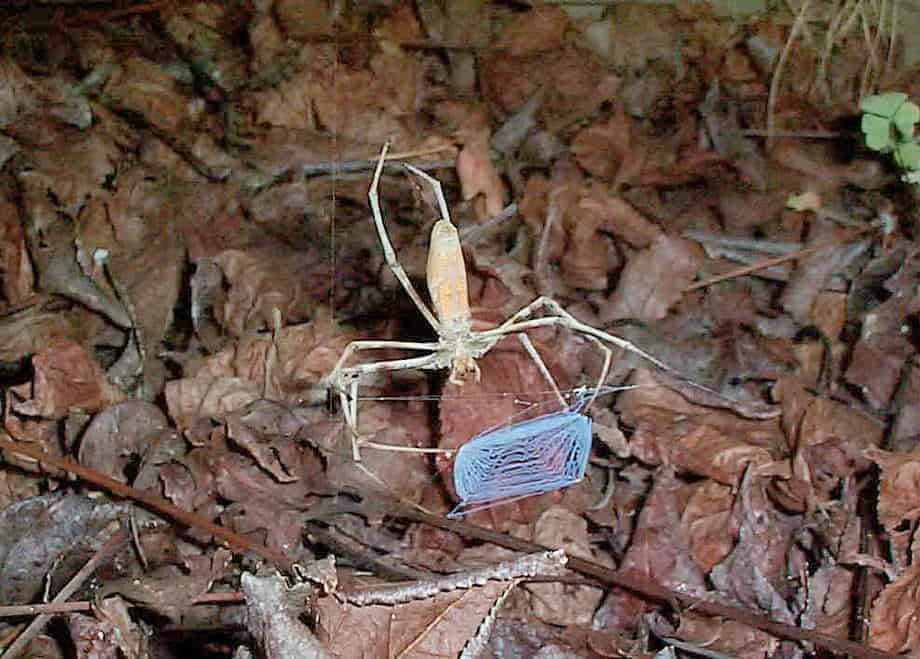The Net Casting spider lives in the warmer parts of USA, Central and South America, Africa and Australia and is sometimes called the Ogre Faced spider or Stick Spider. It is quite large – its body length is about 20mm, and with its legs stretched out, it is about 4 times that length.
They have rarely been seen catching their prey because they hunt at night. Soon after sunset, the spider lays a few strands of silk among the leaves and twigs. It then constructs an “A” shaped framework of silk which is attached to the ground and supported above by a strand running to the twigs above. After finishing a small temporary platform, it begins work on the net.

This is rectangular and about the size of a stamp, supported in each corner. It is made of a series of highly elastic strands of tangled silk that have been combed by the spider’s back legs. Combed silk is not sticky like a web but works by tangling the hairs and scales of the insects it catches.
Row by row, the spider builds its net and then hangs head down, holding the four corners of the net with its front legs and looks like a harmless stick. The Net Casting spider is not fussy what it eats – flies, butterflies, beetles, different insects, and sometimes eats each other.

It now waits for an insect to pass and keeps watch with its 2 large middle eyes. When an insect passes, it lunges and stretches the net out to its full size to trap the insect on the ground.
It then bundles its prey up and covers it completely with silk before giving it a fatal bite with its poisonous fangs. During the night it eats the rest of the insect, leaving only a small ball. At day break, it returns to its resting position along a twig, hiding from birds and other predators.
The Net Casting spider lays about 100 eggs in their silk sac. The baby spider is called a spiderling.
Click here for more Net Casting Spider photos.
Photos: Leon
Information: Melanie
Information obtained from “The Spiders Web”, by Oxford Scientific Films

Information and pictures were taken from children’s projects and where credited to that child does not claim to be original information. Where possible, permission to reproduce has been sought. Any infringement of copyright is purely unintentional.
